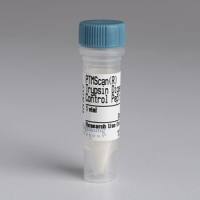Mutant Generation in Vertebrate Model Organisms by TILLING
互联网
522
TILLING (Targeting Induced Local Lesions IN Genomes) is a popular reverse genetic approach that has been successfully applied in several genetic model organisms such as zebrafish, rat, Drosophila , Arabidopsis , or medaka. In contrast to classical targeted knockout technologies that work in mice by directly targeting a gene of interest, TILLING follows an indirect strategy. The first step of the TILLING pipeline is the generation of a TILLING library that consists of large numbers of mutagenized individuals. In a second step, these individuals are screened for mutations in any gene of interest. Screening is performed by PCR amplification of specific exons from each individual of a library followed by mutation detection. This could be done, for example, by direct re-sequencing of PCR fragments or alternatively, by CEL1 endonuclease-mediated mutation discovery. Individuals carrying potentially deleterious point mutations are isolated from the library and mutant lines are established. TILLING allows the identification of a whole range of point mutations, covering nonsense, splice site, and missense mutations in only one screening round, because the generation of mutations by mutagenesis as well as the screening tools is not biased. Potential knockout mutations are initially the mutations of choice, but TILLING screens can also be used to isolate allelic series of point mutations ranging from complete null phenotypes to hypomorphic or even dominant-negative or conditional alleles. These allelic series can be helpful for a comprehensive functional analysis of a gene of interest. TILLING is applicable to any kind of genetically tractable model organism, as long as this model organism is amenable to chemical mutagenesis, and genomic sequence information for a gene of interest is available. This chapter describes the design and pipeline of a TILLING facility as we are currently operating it for zebrafish in Dresden. Protocols for mutation detection by direct re-sequencing are described in detail. However, alternatives to this pipeline do exist and will be mentioned briefly.








